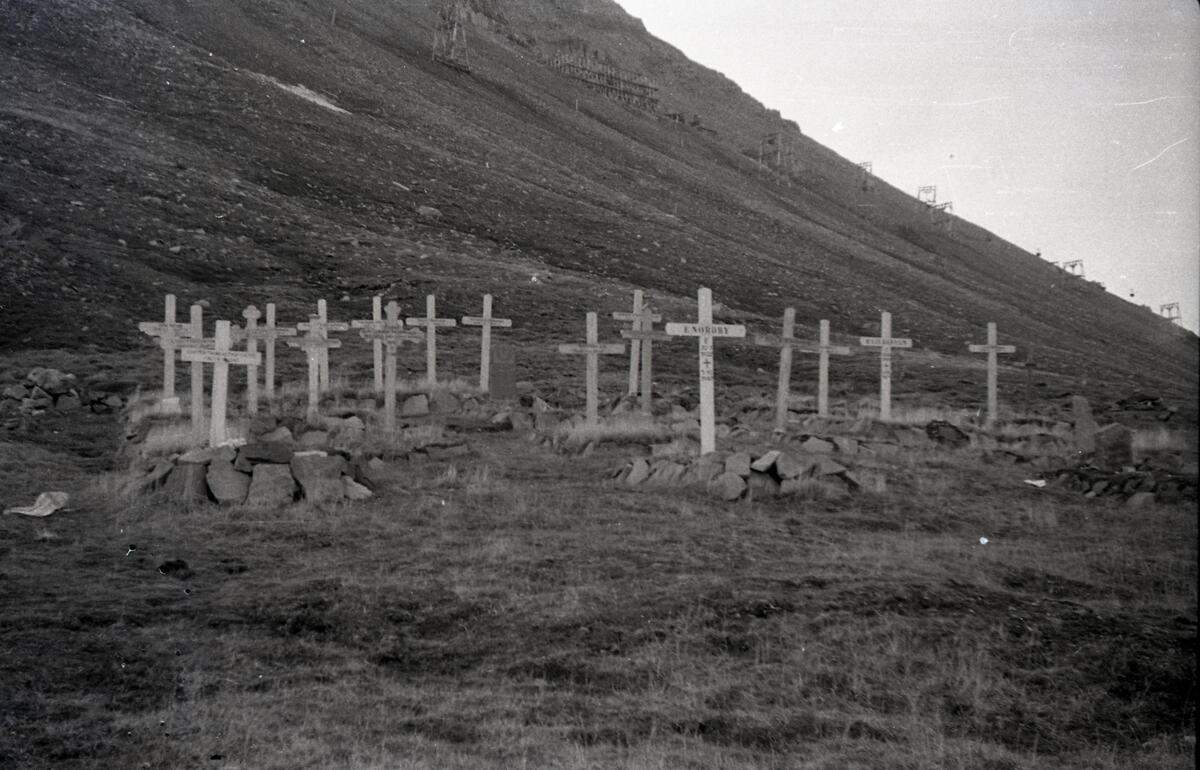Spanish flu differs from Covid-19 mainly in that it hit young people hardest. Right from the start of the epidemic, unusually high mortality was noted among young adults (18-30 years old). The course of the illness could be dramatic. It is said that people could become acutely ill while walking along the street, and that death usually followed soon after. After initial influenza-like symptoms, patients developed pneumonia, had trouble breathing, and eventually suffocated.
- 1/1
Photo: Erling J. Nødtvedt/Svalbard museum
News of the illness reached Longyearbyen – or Longyear City, as it was called until 1925 – but the contagion itself also arrived with the ships that came in the spring and summer of 1918. As early as July that year, the number of miners who reported in sick rose to over half the workforce. The situation was so dramatic that by 27 July, only 20 of the 200 men in Longyear City were able to work. Several shifts in the mine had to be cancelled, and Store Norske Spitsbergen Kulkompani was forced to exert major effort and reprioritise to maintain coal production and loading. From the mine in Hiorthhamn came reports that only six of eighty men were healthy, and operations at the facility ceased periodically. An interesting observation from 1918 is that the carpenters who worked outside the mine evaded the disease. Nobody could find a good explanation for this, however. Nowadays we know that it is easier to protect oneself from contagion if one is outdoors and can keeps a safe distance.
On 8 August, the first miner died in Longyear City. He was a 20-year-old youth from Troms. Over the next two weeks of August 1918, three more men died. They were immediately sent to the mainland to be buried in the villages they came from.
Towards the end of August, the epidemic died down, only to return later with renewed force. On 24 September 1918, the steamship Forsete arrived in Longyear City from Tromsø. Almost everyone on board had contracted Spanish flu, and the sickest of them were in such poor condition that they were admitted to the hospital immediately upon arrival. During the first week of October, seven men died, all of whom had sailed up with the last ship from Tromsø. The deceased ranged in age from 19 to 28. People in Longyearbyen were terrified that the infection would spread again. They therefore decided that the dead men’s clothes and bedding should be burnt, and that the corpses should be buried immediately in the new cemetery. It was late autumn and the permafrost meant that dynamite had to be used to make space for the coffins in the frozen ground.
The seven men who succumbed to Spanish flu now lie at peace in the top row of Longyearbyen’s burial ground. The seven crosses dated 1918 bear the names of the young men who found their final resting place in Longyearbyen.

